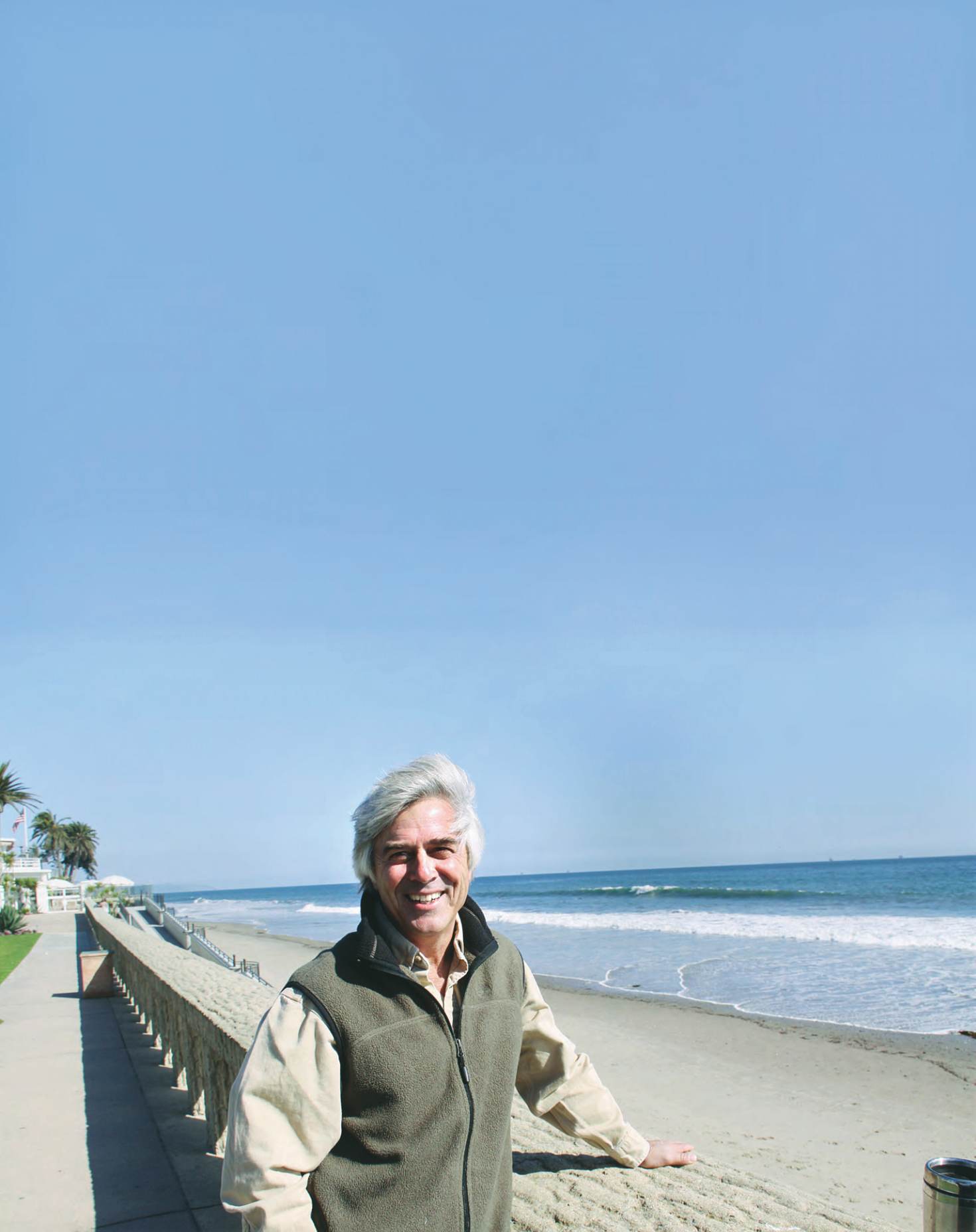Basic HTML Version


summer
|
fal l
43
Mike then points to “those greasy little spots” about three hundred
yards offshore, which are the surface, he says, “of an extraordinary plant
called the giant kelp. It’s got these lovely blades on the surface with an
entire community of animals living in and on them. Hydroids are attached
to the blades; then you’ve got fish, larvae, endemic animals living up in the
canopy; you’ve got snails that birds live on. The stipes – strands up to twice
the thickness of a finger – are twisted together and go all the way down to
the underwater surface to form this remarkable mid-water community.
“Kelp lives in water from about fifteen feet to a hundred feet deep,
held on by ‘holdfasts’ at the bottom. All the nutrition comes from the
surface,” he explains, “and is piped down. The holdfasts, which appear to
be roots, simply attach themselves to a reef, but over a hundred species of
animals live off it. Brittle stars, round worms, bristle worms, segmented
worms, octopus micropyrsus – a tiny octopus that would fit in the palm
of your hand as an adult – live in the holdfasts of the kelp. Sea stars,
sea anemones... the whole bottom is a garden of invertebrates: lobsters,
several species of crabs, flatfish live in the sand channels between the
rocky outcroppings; kelp can’t grow in the sand because there is nothing
to grab, but a lot of fish live down there, such as halibut. You’ve got a
surface community, a mid-water community with bat rays flying through,
sea lions, harbor seals, all sorts of life; you still see sardines out there, and
rockfish and other creatures on the bottom.
“You throw that all together and you’ve got an unbelievably diverse
mix of animals, including gray whales that will often come in that close
to get at the kelp communities; they eat a lot of worms and crustaceans.
during a storm and they become free: a huge mass of free-floating kelp
often ends up on the beach, but equally often, is blown offshore. That
whole community thrives out there until finally it can’t handle it anymore
and the kelp sinks. That’s when you’ll find these rafts of kelp, under
which you’ll find the mola mola, which can weigh upwards of a thousand
pounds. They’re not uncommon at all.
“I would encourage anybody who is at all interested, to take a dive
trip with one of our reputable guides: Island Packers in Ventura, Truth
Aquatics for dive and/or snorkeling trips, kayaking, windsurfing, stand-up
paddling in the caves, whatever you want to do.
“You can put on a wetsuit, a mask, fins, and a weight belt, and go
right offshore and snorkel; on a clear day it can get really nice out there –
ten feet of visibility is plenty clear enough to enjoy some of these animals,
and especially for observing the bottom, with its octopus, and rock fish,
schools of senoritas; I highly recommend it. You can literally go thirty or
fifty feet offshore and bring home a lobster [there is a size limit, and if they
have eggs, you can’t take them; check with fish & game beforehand].
“I’ve dived all over the world,” deGruy concludes, “including under
the ice at both poles...and I’ve never seen a place as pretty as the kelp
forests out off the Channel Islands.” He says the time to explore them is
late fall or early winter, “when the water is crystal clear with a hundred feet
of visibility. You’ll be diving through the stipes, beautiful kelp, you can
see the surface, sun rays coming through, and the bottom with all these
beautiful orange and green sea anemones and corals; it’s just magnificent;
there is nothing prettier than right out there.”
Then you go further out into the channel [it is nearly 1,800 feet at
maximum depth] and you’ll find the humpbacks and blue whales. Right
in front of Santa Rosa and Santa Cruz Islands is blue whale heaven. They
love
it there because of the massive amounts of upwelling, whose nutrients
attract krill; the blue whales come in to take full advantage of that.
“We also get killer whales, which will eat anything, including,
unfortunately, some of the gray whale calves. It’s not a very pretty sight
when they take the gray whale calves. I just saw a killer whale eat an entire
turtle in the Galapagos; you’ll probably see the footage. Killer whales are
pretty tough hombres.
“Ocean sunfish – the mola mola – is one of the most bizarre fish
you’ve ever seen,” deGruy continues. “They are flatfish that live vertically
and dine on jellyfish. What happens is the kelp is torn from the holdfasts
observat ions

